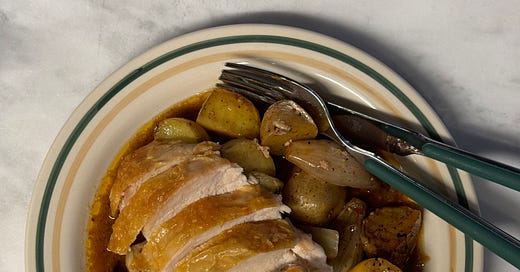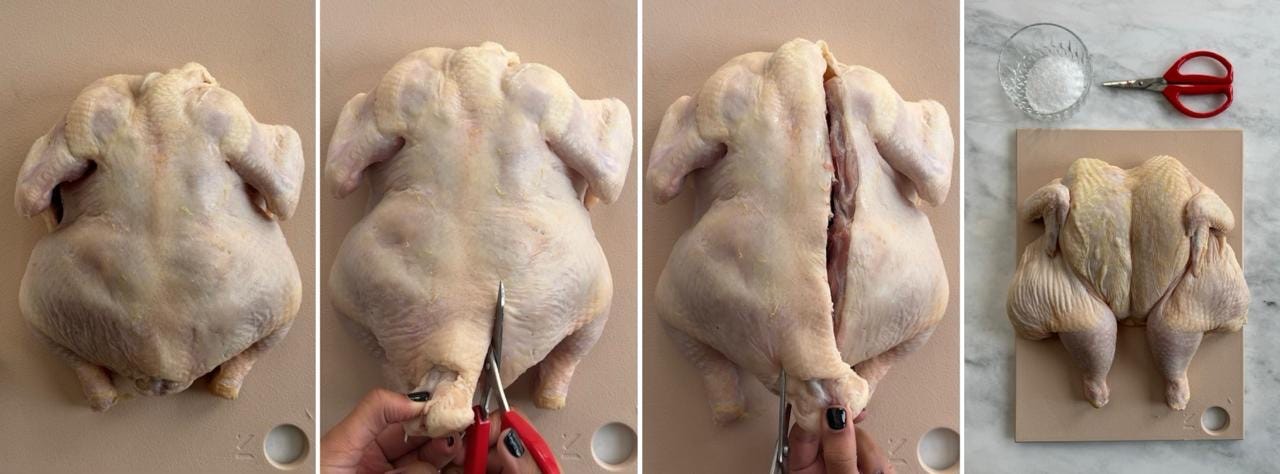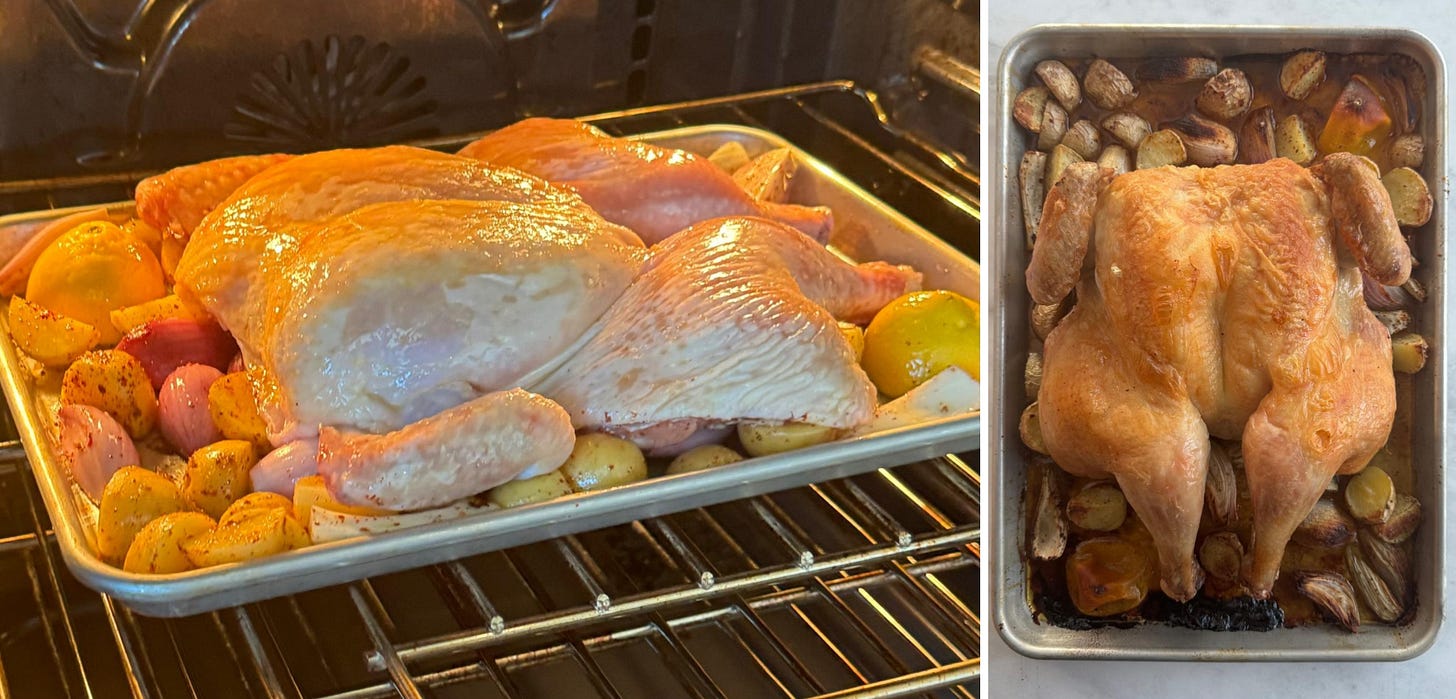I never grew up eating roast chicken or rotisserie chicken; it was this elusive thing I experienced through the cooks on The Food Network. Since then, I’ve come to understand why it’s considered a beloved American stalwart: the first time you make it, it’s dinner. Then, you can easily stretch it for another two meals.
Roast chicken is typically a whole, skin-on chicken baked in the oven, while rotisserie chicken is cooked on a rotating spit (which is why you’ll usually only see it at restaurants or in supermarkets) and generally preferred given the resulting even-cook from the constant rotation. Delicious, but nearly impossible to make at home—or so it would seem. Enter the spatchcock method: by trimming out the spine of a whole chicken, you’re easily able to lay the whole bird flat on a baking sheet, with all its meat facing upward toward the heat source, ensuring an even cook.
This recipe is all about the chicken. The options are endless when it comes to additional seasonings and vegetable pairings, but the secret is really in the salty dry-brine. This method may sound counter-intuitive, but in fact, leaving the chicken to re-absorb all the moisture that is drawn out from the salt is surprisingly effective. The end result is an actually juicy chicken with paper-thin, crispy skin.
Usually I’ll roast some seasoned vegetables alongside the chicken, but the real star, and something you should not skip, is roasting a de-seeded lemon, cut side down. The lemon will caramelize and get sweet and soft, creating a delicious pan sauce for serving.
This is the method I frequent and highly recommend. All you really need is chicken, salt, scissors, and some confidence.
4-6 SERVINGS / 1 HOUR 30 MINUTES, PLUS CHILLING
INGREDIENTS
Diamond Crystal kosher salt
1, 3.5-5 lb. whole chicken, giblets removed, patted dry
1.5 lbs. baby potatoes, halved or quartered if larger
4 large shallots, quartered lengthwise
1 fennel bulb, halved and cut into 1” thick wedges, optional
2 tsp. Aleppo chilli flakes
1 tsp. sumac, optional
2 Tbsp. olive oil, divided
1 large lemon, halved, deseeded
METHOD
Measure out 1 teaspoon of kosher salt per pound of chicken, round up if not a whole number.
Place chicken breast-side down, spine-side up, on a secure plastic cutting board or work surface. Using sharp kitchen shears (these are best), trim along both sides of the spine to remove it. Flip the chicken over so it’s breast-side up, and push down where the two breasts meet with the palm of your hand to break the breast bone and allow the chicken to lay completely flat. Season both sides of the chicken using the pre-measured salt (it’s ok if some of it escapes). Transfer the chicken to a plate or quarter-sheet pan and refrigerate to dry brine, ideally overnight, but at least four hours.
Remove the chicken from the fridge and preheat the oven to 450°F.
Add potatoes, shallots, fennel, chili flakes, sumac, if using, and 1½ teaspoons kosher salt to a rimmed baking sheet. Drizzle over 1 tablespoon olive oil and toss to combine. Place lemon, cut side down, toward the edge of the baking sheet, and push seasoned vegetables to the edges of the tray to make room for the chicken. Transfer the chicken to the center of the baking sheet. Be sure that no potatoes are underneath the chicken (they won’t cook through if obstructed).
Drizzle remaining 1 tablespoon olive oil over the chicken skin, rub all over to coat.
Bake the chicken for 55 minutes to 1 hour, or until the chicken and potatoes are cooked through and golden brown. Remove from the oven and transfer the chicken to a cutting board to rest for at least 10 minutes (it won’t go cold, I promise!). Meanwhile, juice the lemon and toss the potatoes, shallots, and fennel in the pan drippings.
Carve chicken and serve over the vegetables and pan sauce.
Shred any leftover chicken and use in soups, salads, or sandwiches.








Great recipe! When do add the lemon?